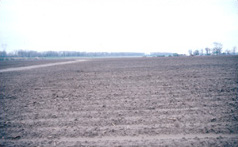Nodena Site
|
Nodena Site
|
|

Fields at the Nodena Site
|
|
| Nearest city | Wilson, Arkansas |
|---|---|
| Coordinates | 35°36′9″N 89°58′45″W / 35.60250°N 89.97917°WCoordinates: 35°36′9″N 89°58′45″W / 35.60250°N 89.97917°W |
| Area | 305 acres (123 ha) |
| NRHP Reference # | 66000201 |
| Significant dates | |
| Added to NRHP | October 15, 1966 |
| Designated NHL | February 19, 1964 |
The Nodena Site is an archeological site east of Wilson, Arkansas and northeast of Reverie, Tennessee in Mississippi County, Arkansas, United States. Around 1400–1650 CE an aboriginal palisaded village existed in the Nodena area on a meander bend of the Mississippi River. The Nodena site was discovered and first documented by Dr. James K. Hampson, archaeologist and owner of the plantation on which the Nodena site is located. Artifacts from this site are on display in the Hampson Museum State Park in Wilson, Arkansas. The Nodena Site is the type site for the Nodena Phase, believed by many archaeologists to be the province of Pacaha visited by Spanish explorer Hernando de Soto in 1542.
In 1900, a prehistoric mastodon skeleton was discovered 2 miles (3.2 km) south of the Nodena site. In 1964, the Nodena Site was declared a National Historic Landmark and in 1966 it was added to the National Register of Historic Places.
Nodena is the type site for an important Late Mississippian cultural component, the Nodena phase, which dates from about 1400–1700 CE. The Nodena Phase was a collection of villages (see Eaker Site) along the Mississippi River between the Missouri Bootheel and Wapanocca Lake. This culture is contemporary with the Menard Complex, Tipton Phase, Walls Phase and the Parkin Phase. The Parkin Indian Mound, the type site for the Parkin Phase, is the site of another Late Mississippian village located in Parkin, Arkansas, about 30 miles (50 km) southwest of Wilson. In the early 1540s, the Spanish Hernando de Soto Expedition is believed to have visited several sites in the Nodena Phase, which is usually identified as the Province of Pacaha. The Parkin Site is a candidate for the province of Casqui. Nodena people were part of the Southeastern Ceremonial Complex, an extensive religious and trade network that brought chert, whelk shells, and other exotic goods to the site.
...
Wikipedia


